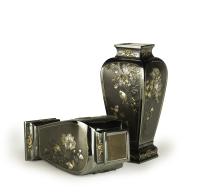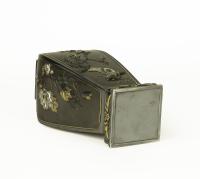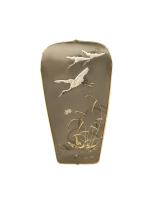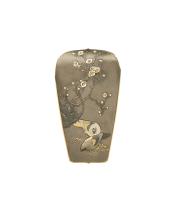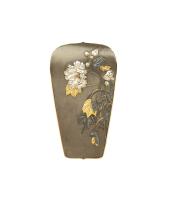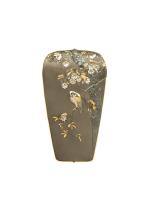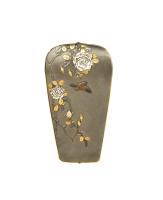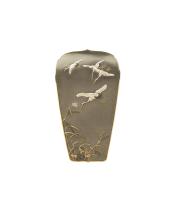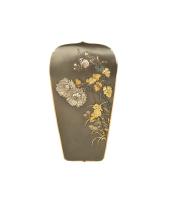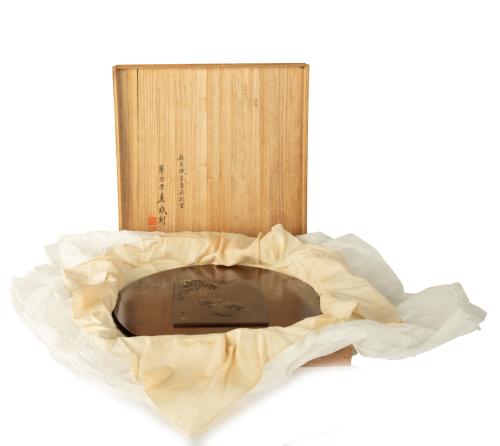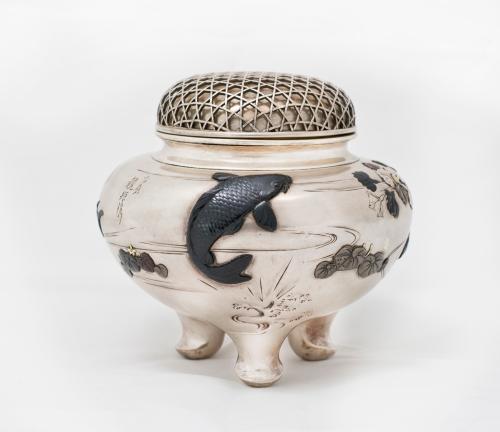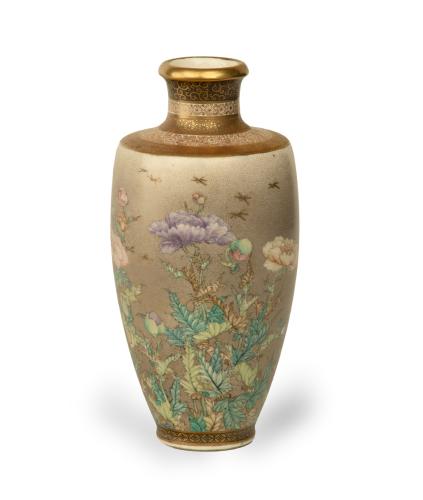
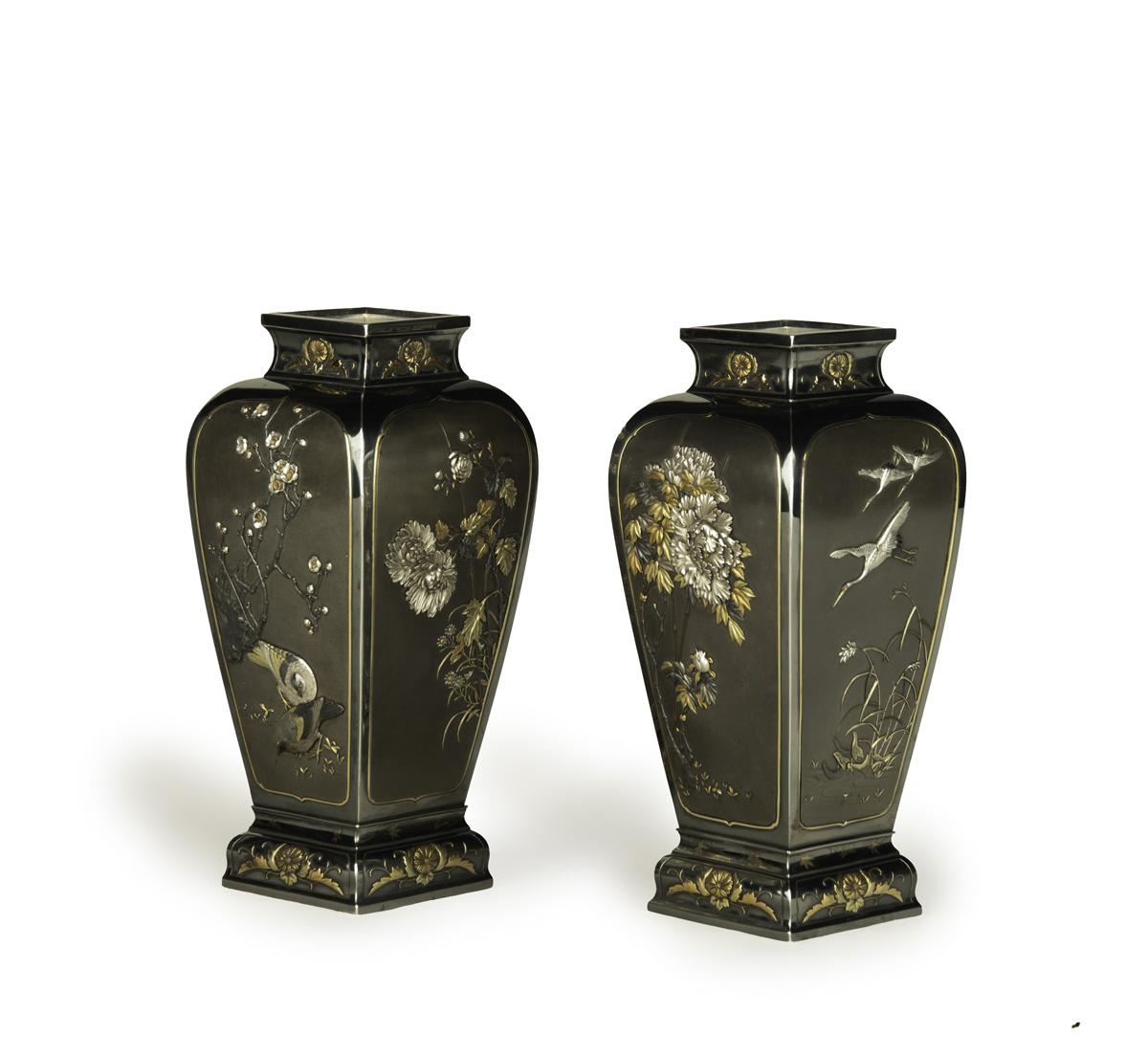
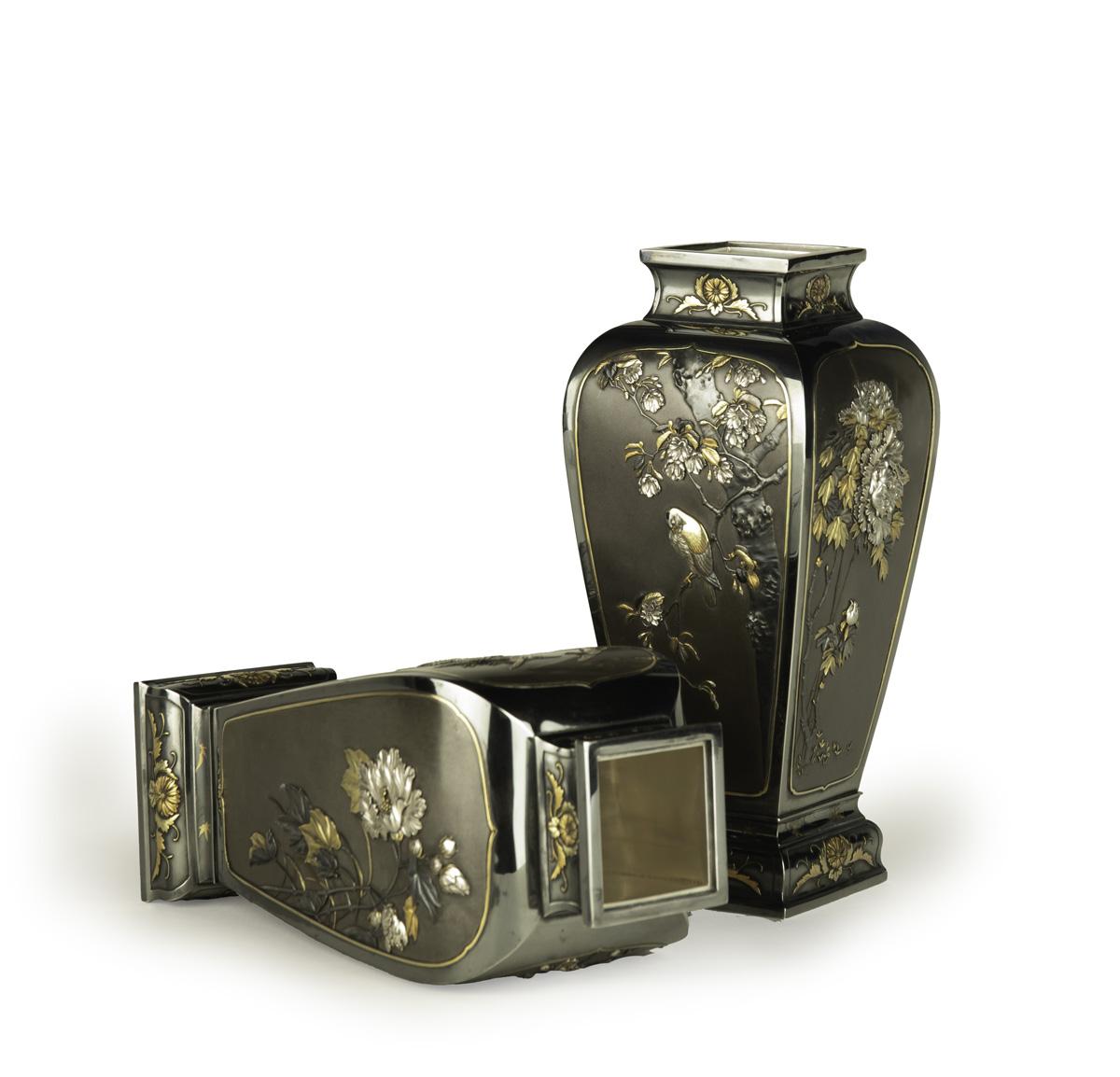
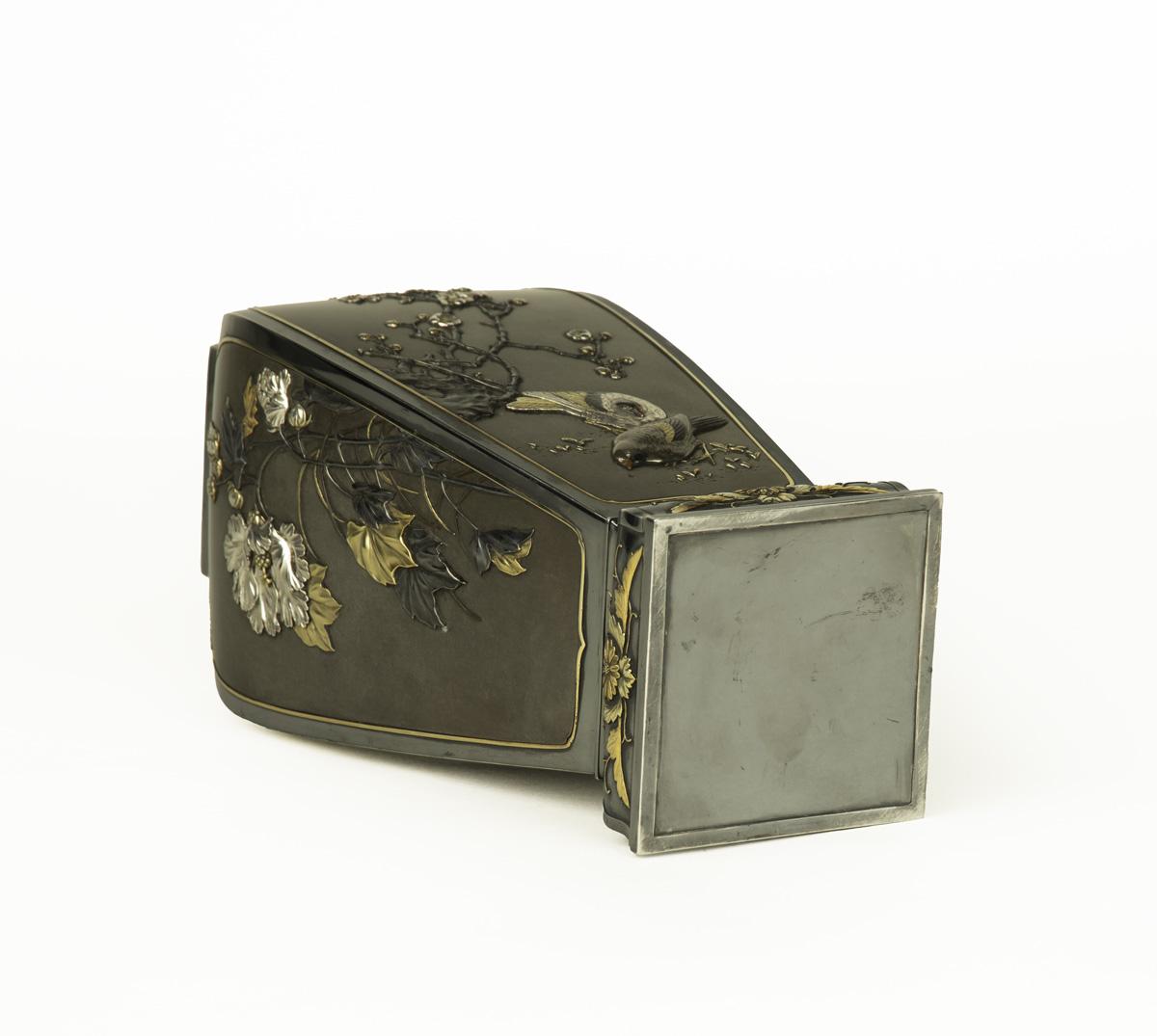
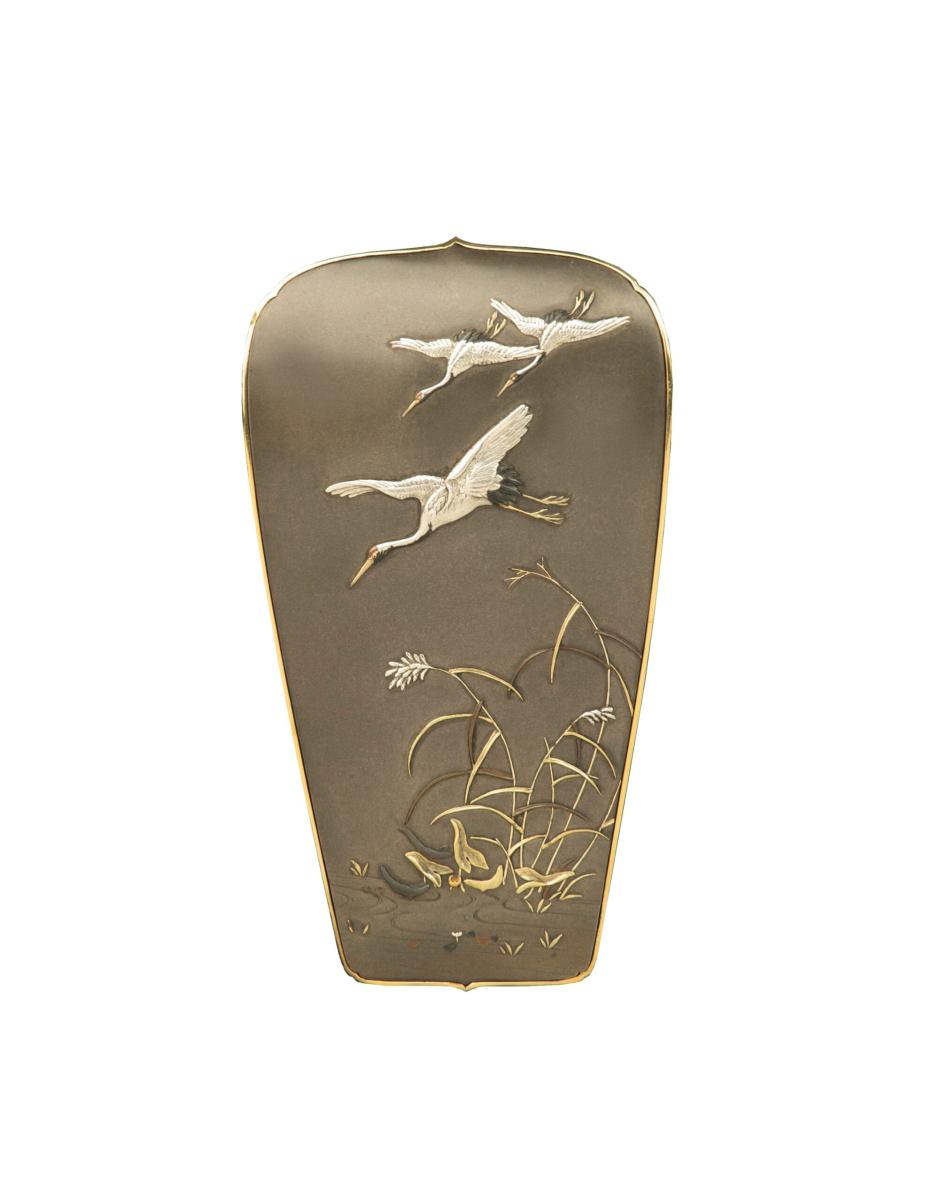

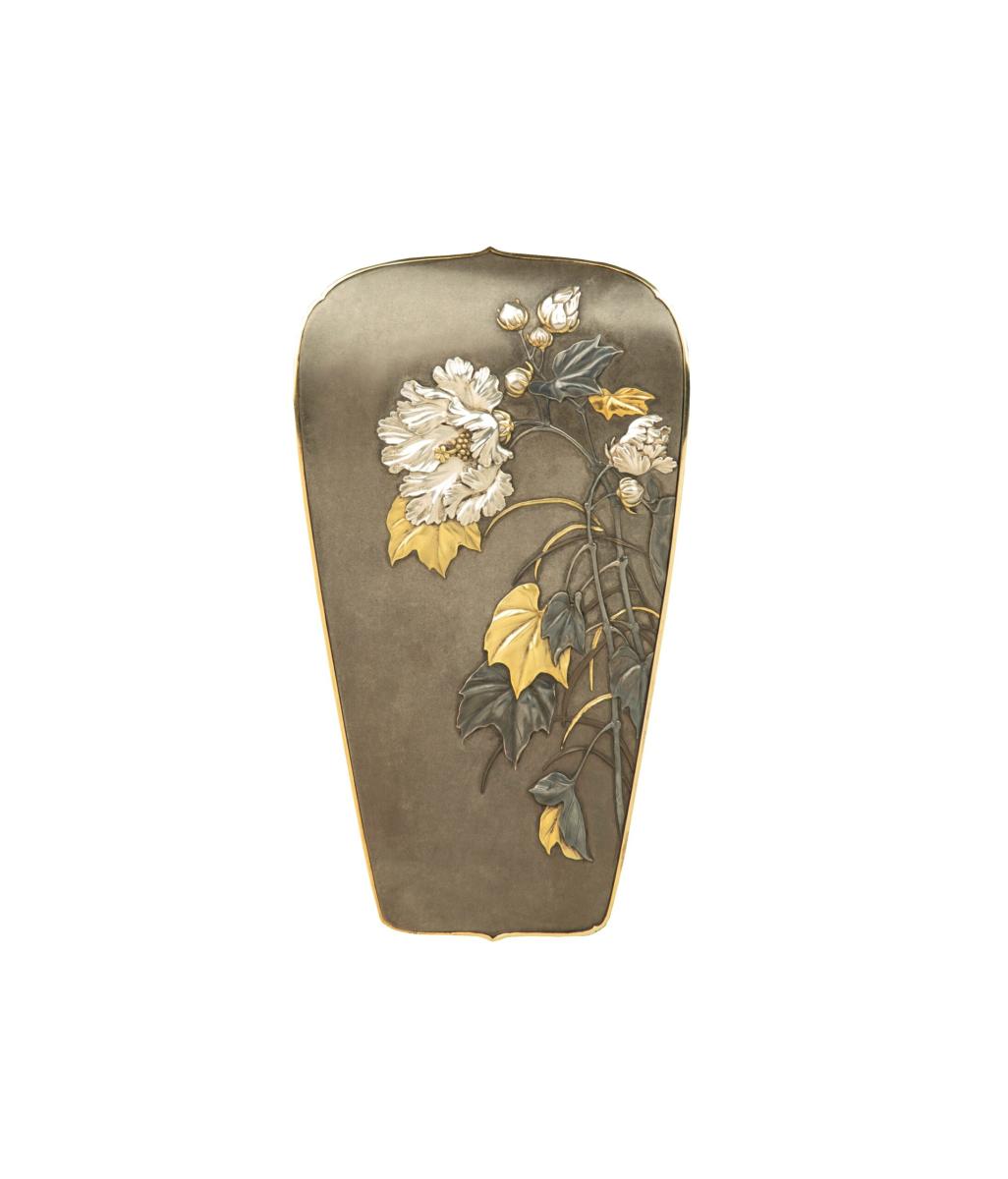

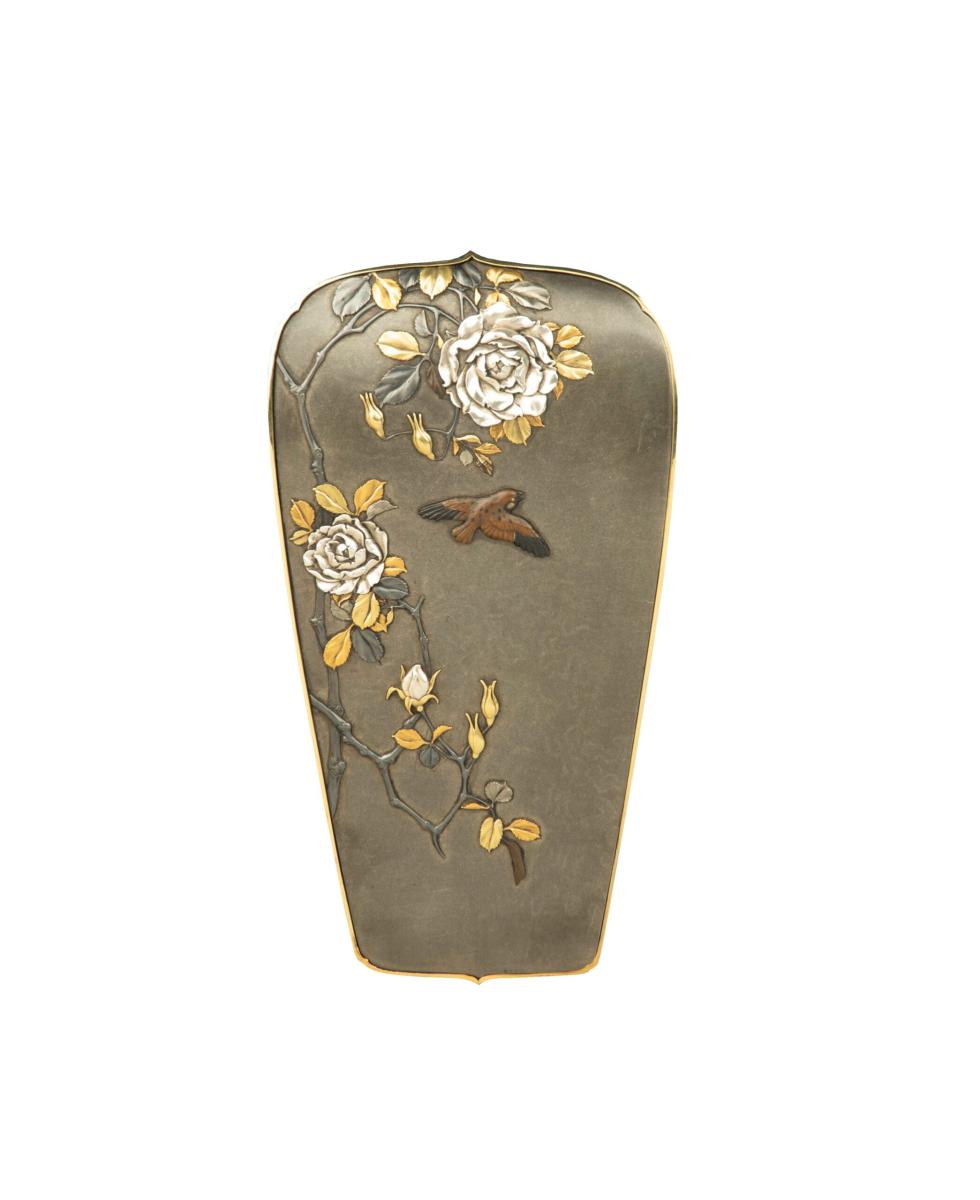
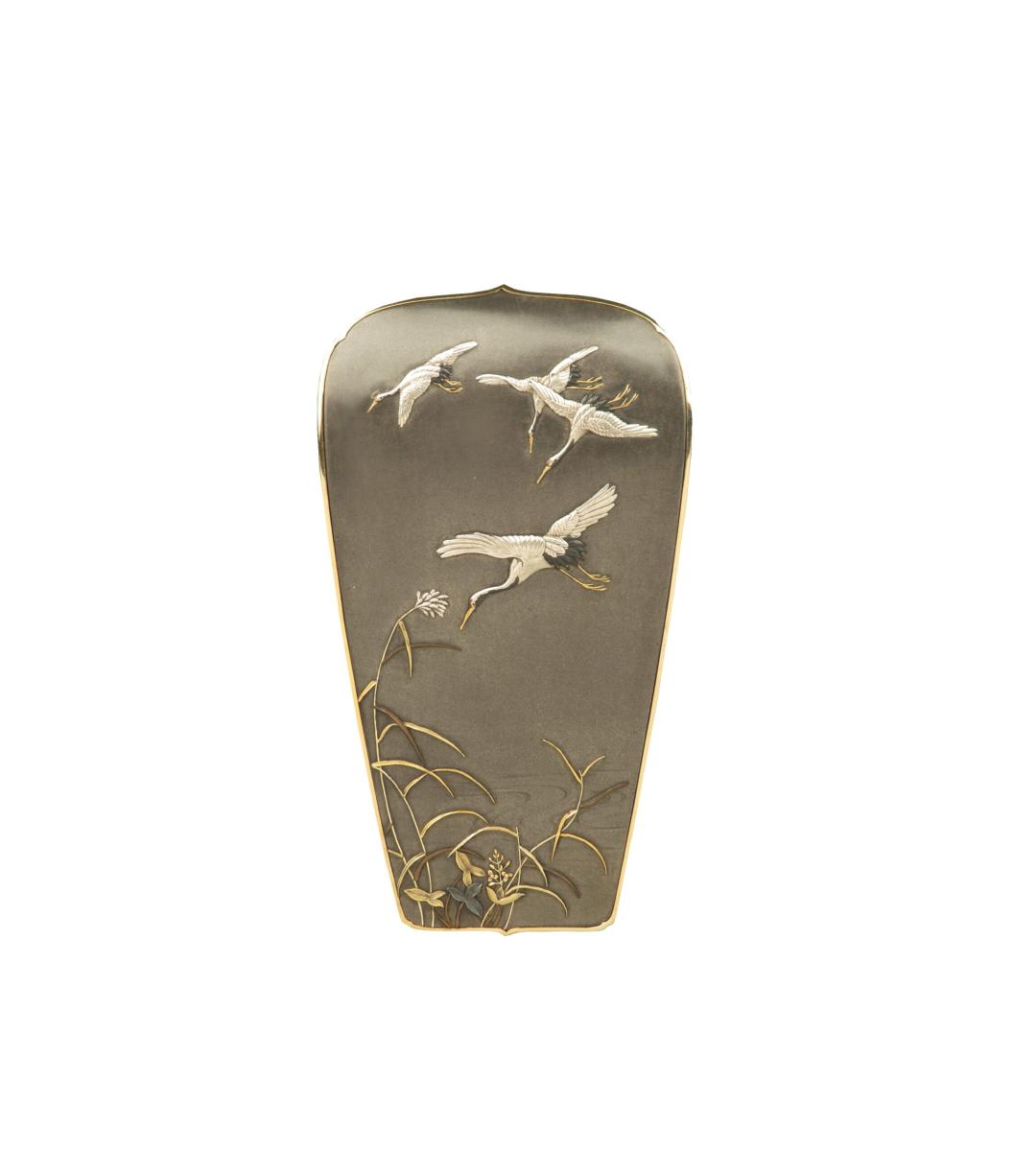

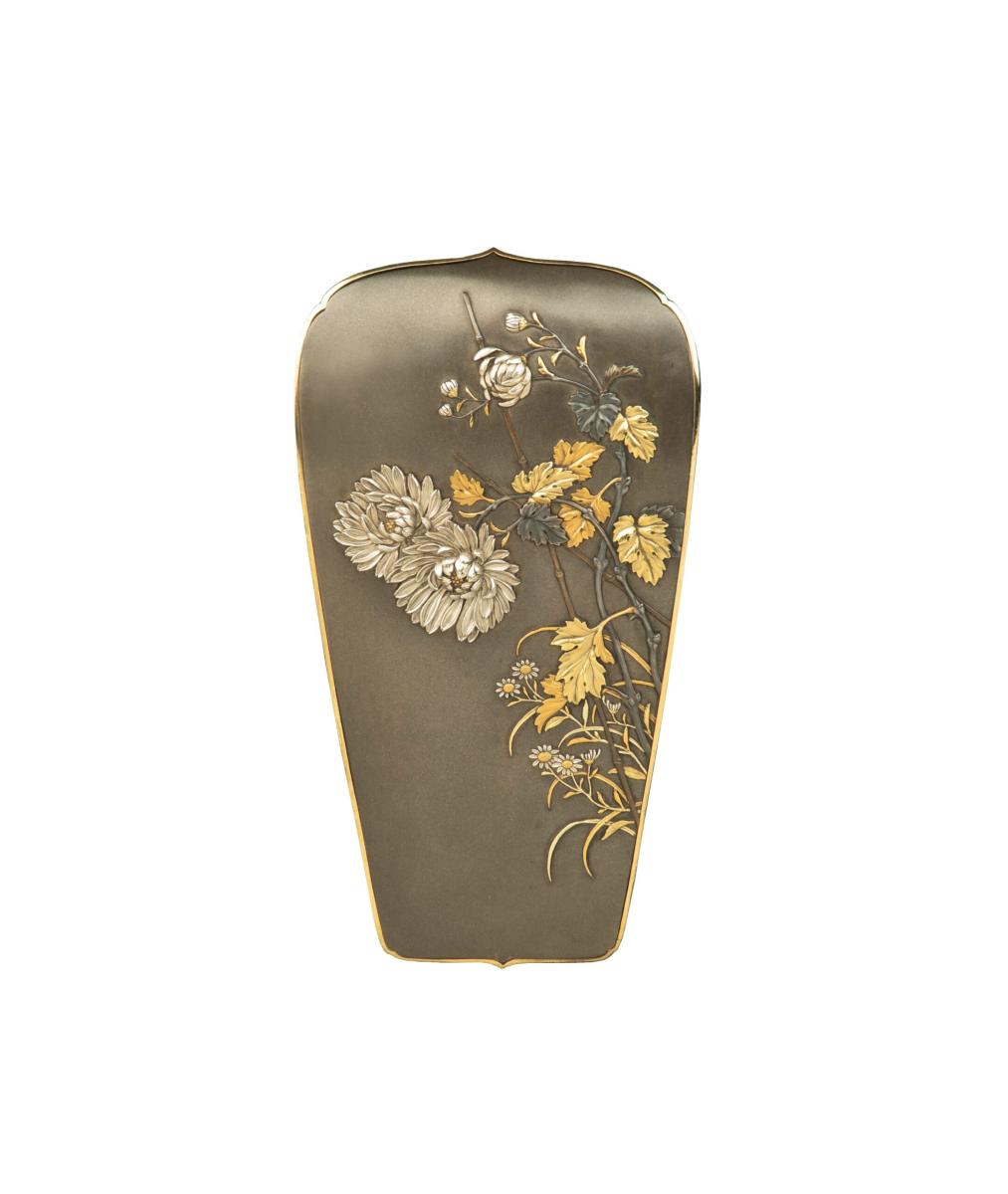
This object includes complimentary, Insured Shipping / Delivery within the UK
This object includes complimentary, International Insured Shipping
This object is eligible for a Certificate of BADA Provenance
The BADA Standard
- Since 1918, BADA has been the leading association for the antiques and fine art trade
- Members are elected for their knowledge, integrity and quality of stock
- Our clients are protected by BADA’s code of conduct
- Our dealers’ membership is reviewed and renewed annually
- Bada.org is a non-profit site: clients deal directly with members and they pay no hidden fees
Exceptional Japanese Silver and Mixed Metal Vases.
As part of our Japanese works of art exhibition we are delighted to offer this exceptional quality pair of Meiji Period (1868-1912) mixed metal vases. The vases are formed from pure silver with each vase housing four shaped shibuichi panels decorated in fine quality mixed metals including shakudo, silver and gold. The artist has gone to extraordinary lengths to manufacture these vases in such complex fashion, the blackened silver bodies rise and taper from the platform base with the inset shibuichi panels formed to curve within their individual gilt frames, this unusual form gives rise to a slight convex effect as well as an appealing softened angled aspect, presumably intended to display four panels at once. Each of the designs are painstakingly crafted as individual scenes of birds in flight or at rest within native flora, each panel a work of art in its own right.
The necks and bases are further decorated with conforming gold floral swags with the inner linings of these heavy gauge vases being manufactured from pure silver. Once again a Japanese artisan has frustrated us by not leaving his signature, perhaps on this occasion, as in many instances, the wealthy recipient or commissioning agent wanted them unsigned, we will never know for sure. What is sure is that this fine pair of vases will stand up to the scrutiny of the most fastidious collectors of Japanese metalwork of the period.
Attribution:
Having researched and handled many examples of mixed metal wares of this period and in particular artists dominant and excelling in the use of silver and shibuichi in this manner, it leads me to come up with two possible names that I would feel comfortable in attributing these works to, naturally there are other possibilities and my opinion is for guidance only.
The first was a master at decorating small silver vessels with tranquil scenes as well as boxes with shibuichi panels, often in this style, that artist was Sato Kazuhide . His work can be found in many leading collections including the Khalili with his most famous work probably a chicken koro.
However I am going to stick my neck out and plump for another artist excelling in exactly this type and quality of works, his name Hasegawa Issei. Hasegawa Issei (art name Gyokutosai ) worked in Asakusa Tokyo, he exhibited at the Chicago columbus exposition 1893, At the Liège exposition 1905 he exhibited a crystal ball on a metal base, and at the Paris exposition 1900 he exhibited a silver vase, incense burner and a bird subject okimono .
The Kyoto Sannenzaka museum has several works by the artist.
The Khalili collection has two works by the artist reproduced in The Meiji no Takara, Metalwork Part I – plate 66, and Part II – plate 130.
In 2020 Vision of an enlightened ruler Vol 1 – Plate 17, we exhibited a very similar decorated silver & shibuichi vase by this artist, now residing in a USA collection.
Condition Report:
Lovely condition throughout.
Approximate Sizes:
Height : 9 1/2″ 24 cm
Width : 4″ 10.2 cm
Depth : 4″ 10.2 cm
Weight : 3028 gms
Free worldwide delivery and a certificate of authenticity are included within the price of this item.
Dimensions
Height : 9 1/2″ 24 cm Width : 4″ 10.2 cm Depth : 4″ 10.2 cmWeight
Weight : 3028 gmsThis object includes complimentary, Insured Shipping / Delivery within the UK
This object includes complimentary, International Insured Shipping
This object is eligible for a Certificate of BADA Provenance
Condition report
Lovely condition throughout.The BADA Standard
- Since 1918, BADA has been the leading association for the antiques and fine art trade
- Members are elected for their knowledge, integrity and quality of stock
- Our clients are protected by BADA’s code of conduct
- Our dealers’ membership is reviewed and renewed annually
- Bada.org is a non-profit site: clients deal directly with members and they pay no hidden fees



